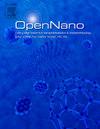兰花茎中纤维素纳米原纤维的绿色提取和分离及其在伤口敷料中的应用
Q2 Pharmacology, Toxicology and Pharmaceutics
引用次数: 0
摘要
本研究以农业废兰花茎为原料,利用其提取物提取纳米纤维素用于伤口敷料。采用木聚糖酶和漆酶协同预处理的绿色方法分离纤维素。然后用机械方法分离纤维素纳米纤维(CNF)。绿色预处理脱木质素效率高,化学用量少,白度指数提高到90.84%。经广角x射线散射(WAXS)分析,该纤维的结晶度为72.85%。透射电镜(TEM)显示CNF平均直径为10.51±2.41 nm。粗提物对金黄色葡萄球菌和大肠杆菌具有抗炎抑菌作用,最低抑菌浓度为51.6 mg/mL。采用MC3T3-E1细胞株评价提取物的细胞毒性。利用CNF和提取液制备了一种新型的多层创面敷料。用傅里叶变换红外光谱法确定了膜的化学成分。利用同步辐射x射线层析显微镜建立了膜的三维结构。该膜可生物降解,对MC3T3-E1细胞无毒,具有78.52%的细胞存活率。这些发现表明,利用绿色预处理技术从兰花茎等农业废弃物中提取有价值的化学物质,可以制成环保的伤口敷料。本文章由计算机程序翻译,如有差异,请以英文原文为准。
Green extraction and isolation of cellulose nanofibrils from orchid (Dendrobium sonia earsakul) stem for wound dressing application
This study explored agricultural waste orchid (Dendrobium sonia earsakul) stem as a sustainable material to extract nanocellulose with its extract for wound dressing applications. Cellulose isolation was performed using a green method involving synergistic pretreatment with xylanase and laccase enzymes. This was followed by isolation of cellulose nanofibers (CNF) using mechanical process. The green pretreatment demonstrated high efficiency in delignification, reduced chemical usage, and increased whiteness index to 90.84 %. The fiber showed a high crystallinity index of 72.85 %, which was confirmed by wide-angle X-ray scattering (WAXS) analysis. Transmission electron microscopy (TEM) revealed CNF with an average diameter of 10.51 ± 2.41 nm. The crude extract showed anti-inflammatory effect and antimicrobial activities against S. aureus and E. coli with minimum bactericide concentration (MBC) of 51.6 mg/mL. The cytotoxicity of the extract was evaluated using MC3T3-E1 cell line. A novel multi-layered wound dressing was developed using the CNF and the extract. The chemical composition of the membrane was confirmed by Fourier transform infrared spectroscopy. The 3D structure of the membrane was established using Synchrotron radiation X-ray tomographic microscopy. The membrane is biodegradable, non-toxic against MC3T3-E1 cells and biocompatible with 78.52 % cell viability. These findings suggest the possibility of extracting valuable chemicals from agricultural wastes such as orchid stem using green pretreatment to create an eco-friendly wound dressing.
求助全文
通过发布文献求助,成功后即可免费获取论文全文。
去求助
来源期刊

OpenNano
Medicine-Pharmacology (medical)
CiteScore
4.10
自引率
0.00%
发文量
63
审稿时长
50 days
期刊介绍:
OpenNano is an internationally peer-reviewed and open access journal publishing high-quality review articles and original research papers on the burgeoning area of nanopharmaceutics and nanosized delivery systems for drugs, genes, and imaging agents. The Journal publishes basic, translational and clinical research as well as methodological papers and aims to bring together chemists, biochemists, cell biologists, material scientists, pharmaceutical scientists, pharmacologists, clinicians and all others working in this exciting and challenging area.
 求助内容:
求助内容: 应助结果提醒方式:
应助结果提醒方式:


